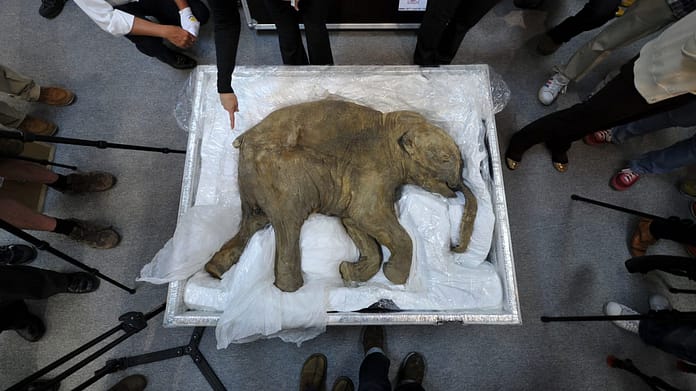Are you planning a Törööö – or are you just making a big fuss?
Scientists want to bring the woolly mammoth, which became extinct several thousand years ago, to life. Many newspapers unanimously talk about this. Based on this, genetic research company Colossal is said to have raised US$15 million (equivalent to about €12.7 million) for this coup.
+++ BILD is now also available on TV! CLICK HERE FOR BILD LIVE +++
The plan looks like this: Researchers want to cross the giant, well-preserved DNA from perpetual ice with Asian elephants. Embryos must be carried artificially or in surrogate mother animals. If all goes well, scientists expect the first giant elephant cubs to appear in six years.
The resulting shaggy mixture with long hair should be transferred to the tundra. These are arid steppes south of the Arctic, where the thermometer rarely rises above zero degrees.

Hairy contemporaries: Researchers want to bring woolly mammoths back to lifePhoto: Brand X Pictures / Getty Images
“Our goal is to build an elephant that is cold-resistant, but that will look and act like a mammoth. Not because we’re trying to fool anyone, but because we want something that is functionally equivalent to a mammoth. An animal that enjoys its time at minus 40 degrees and does all the things that elephants and mammoths do — especially pushing trees.” “guardian”. The Harvard professor is one of the founders of the research firm Colossal.
If you believe scientists, then the resurrection of the mammoth primarily serves the environment. On the other hand, this should strengthen the endangered Asian elephant population. On the other hand, reintroducing hybrid mammoths helps tundra habitat, which accounts for five percent of the Earth’s total land area, thus combating climate change.
Other scholars question the plans. Victoria Herridge, an evolutionary biologist at the Natural History Museum in London, called the plans “unbelievable” justifications. “The scope of this experiment is enormous. We are talking about hundreds of thousands of mammoths, each of which takes years to grow up.” Ecology professor Gareth Phoenix warned of the “unintended harmful consequences” of such a revival.
The plan to let extinct animals trample the earth again is not new. Appropriate curricula have been around for ten years. New is the large amount that will be invested in the project.
Time will tell if this time is really Töröö.



